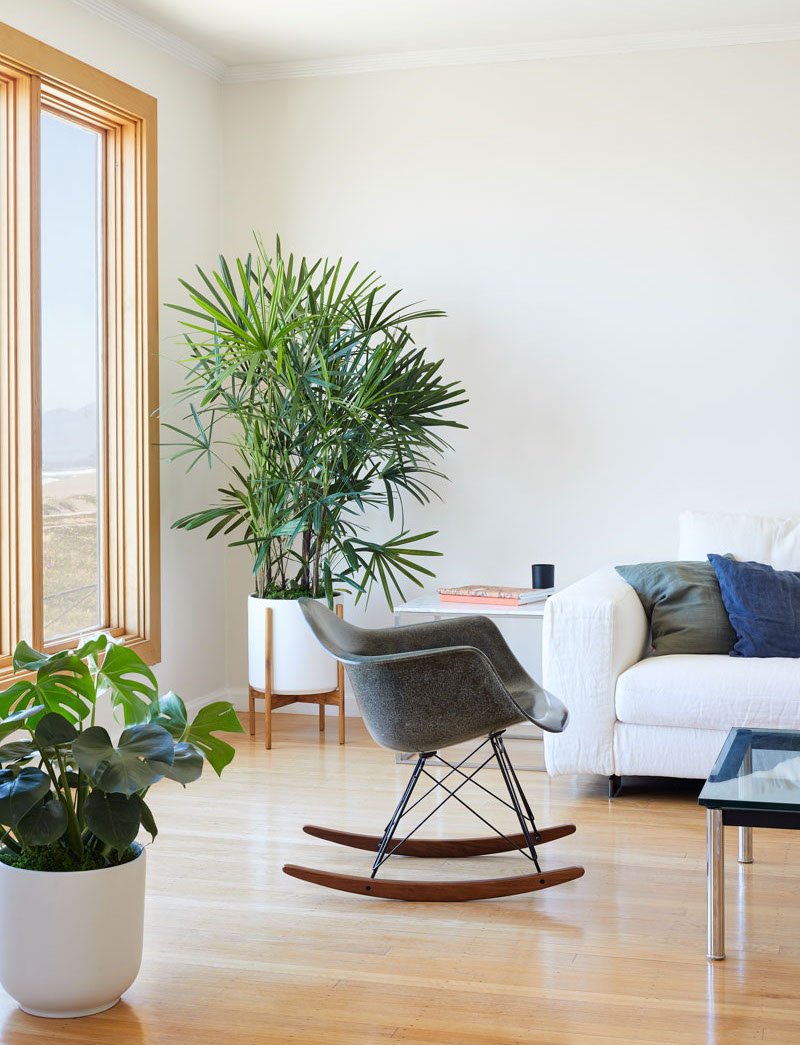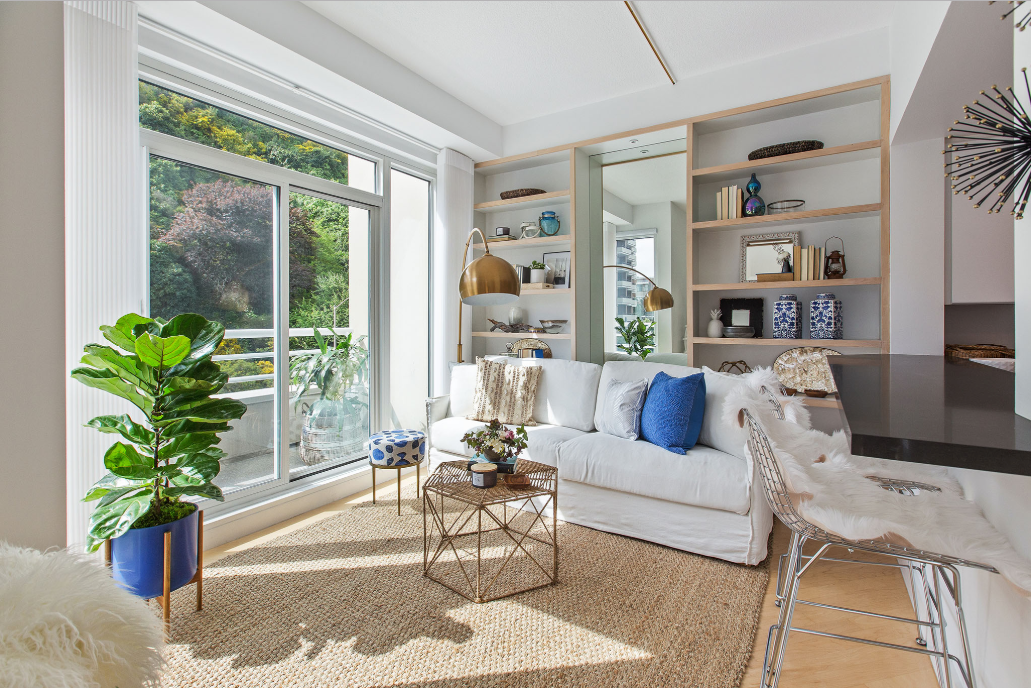Decorating with small plants adds life and color to any space. They are perfect for small areas and easy to maintain.
Plants can transform a room, making it feel fresh and inviting. Small plants are versatile and fit into various decor styles. Whether you have a big house or a tiny apartment, small plants can make a big difference. They are affordable and bring a touch of nature indoors.
In this post, we will explore how to decorate with small plants effectively. We’ll cover placement tips, care instructions, and creative ideas. Get ready to turn your home into a green oasis!
Choosing The Right Plants
Decorating with small plants brings life and color to your space. Choosing the right plants ensures they thrive and fit your decor. Consider the lighting, maintenance, and space available when selecting plants.
Best Plants For Small Spaces
- Succulents: They need little water and come in many shapes and sizes.
- Air Plants: These require no soil and are perfect for tiny spaces.
- Miniature Ferns: They thrive in humid environments like bathrooms.
- Herbs: Small pots of herbs like basil and mint are useful and pretty.
- Cacti: They need minimal care and suit various decorative styles.
Low Maintenance Options
| Plant | Care Instructions |
|---|---|
| Snake Plant | Water every 2-3 weeks. Tolerates low light. |
| ZZ Plant | Water once a month. Thrives in low light. |
| Pothos | Water weekly. Grows well in low to bright light. |
| Spider Plant | Water weekly. Prefers indirect light. |
| Peace Lily | Water weekly. Likes low to medium light. |

Credit: tidymom.net
Placement Ideas
Decorating with small plants can bring life and freshness to any space. Their compact size makes them perfect for various spots around your home. Finding the right placement for these green companions is key to maximizing their aesthetic appeal and benefits. Here are some creative placement ideas to help you integrate small plants into your decor.
Windowsills And Ledges
Windowsills and ledges are perfect for small plants. These spots provide natural light, which many plants need to thrive. Arrange a few succulents or tiny potted herbs on your kitchen windowsill. It will create a mini indoor garden. Small ferns or flowering plants on your living room ledge can add charm and a touch of nature. Ensure to rotate your plants to ensure even growth.
Bookshelves And Mantels
Bookshelves and mantels offer unique places for small plants. Nestle a few tiny plants between your favorite books. It will make your bookshelf more lively. Choose plants that need less light if your shelf is away from windows. Succulents and air plants are good choices. On the mantel, mix small plants with other decorative items. A small cactus next to a photo frame can create an interesting contrast. Experiment with different arrangements to find what looks best.
Creative Containers
Decorating with small plants can bring life to any space. Choosing the right containers can make a big difference. Creative containers add character and uniqueness to your decor. Let’s explore some ideas that can help you make the most of your small plants.
Repurposed Items
Old mugs can make charming plant holders. Vintage tea tins can be perfect for succulents. Use mason jars for a rustic touch. Even an old shoe can become a quirky planter. Repurposing items is eco-friendly and budget-friendly. It gives your plants a distinctive home.
Stylish Pots And Planters
Stylish pots add elegance to your decor. Choose pots with bold colors or patterns. Ceramic pots can bring a touch of sophistication. Hanging planters save space and look modern. Wall-mounted planters create a living wall effect. Stylish containers can complement any interior design.
Grouping And Arranging
Decorating with small plants can transform any room into a vibrant and lively space. Grouping and arranging these tiny greens is an art that combines creativity and design principles. To make your space look cohesive and interesting, consider these tips.
Creating Visual Interest
Mixing various types of plants creates a dynamic look. Combine plants with different leaf shapes, colors, and textures. For example, pair a succulent with a fern and a flowering plant. This variety catches the eye and keeps the arrangement from feeling monotonous.
Use decorative pots to enhance visual appeal. Choose pots in different materials, such as ceramic, terracotta, or glass. Select varying colors and patterns to create contrast. This way, the pots themselves become part of the decor.
Using Different Heights
Varying plant heights add depth and dimension to your arrangement. Place taller plants at the back and shorter ones in front. This layering effect creates a sense of depth and makes the display more engaging.
Use stands, shelves, and tables to elevate some plants. For instance, place a tall plant on the floor, a medium one on a table, and a small one on a shelf. This setup ensures that each plant is visible and gets the attention it deserves.
Grouping plants of different heights together also creates a natural look. In nature, plants grow at varying heights, so mimicking this in your home brings a piece of the outdoors inside.
Incorporating Plants In Different Rooms
Small plants can transform any space. They bring a touch of nature indoors. They can brighten up a room and improve air quality. Let’s explore how to incorporate them into different rooms of your home.
Living Room
The living room is the heart of the home. Place small plants on side tables. Use a variety of pots for an eclectic look. Shelves and mantels are perfect spots for plants. Create a mini indoor garden on a coffee table.
Kitchen
Plants can thrive in the kitchen. Use herbs for a fresh look and aroma. Place them on windowsills or countertops. Small hanging plants can save counter space. They add charm above the sink or stove.
Bedroom
Bedrooms benefit from the calming presence of plants. Use small plants on nightstands or dressers. Choose plants that require low light. They help improve sleep quality and create a peaceful vibe.
Bathroom
Bathrooms are great for moisture-loving plants. Place small pots on shelves or near the sink. Hanging plants work well in bathrooms too. They can create a spa-like atmosphere. Choose plants that thrive in humidity.

Credit: blog.leonandgeorge.com
Care And Maintenance
Decorating with small plants can transform your space. Proper care and maintenance are key. Healthy plants add beauty and a sense of calm. Let’s dive into some essential tips.
Watering Tips
Overwatering is a common mistake. Small plants need less water. Check the soil moisture before watering. Use your finger to feel the soil. If it’s dry, it’s time to water. Avoid letting plants sit in water. Use pots with drainage holes. This prevents root rot.
Light Requirements
Light is vital for plant health. Different plants need different amounts of light. Place your plant in a spot with indirect light. Direct sunlight can burn leaves. If your space is dim, consider low-light plants. Rotate plants regularly. This ensures even growth.
Pruning And Trimming
Pruning keeps plants healthy. Remove dead or yellow leaves. This promotes new growth. Use clean, sharp scissors. Cut just above a leaf node. Trimming helps maintain shape. It also prevents plants from becoming leggy. Regular pruning encourages bushier growth.
Seasonal Decorating
Seasonal decorating with small plants can bring a refreshing change to your space. Each season has its own charm, and small plants help capture that essence. They are perfect for infusing your home with vibrant colors and textures. Let’s explore how to use small plants for seasonal decorating.
Holiday Themes
Using small plants to match holiday themes can be delightful. During Christmas, mini pine trees or small poinsettias make perfect decorations. They add a festive touch to your home. For Halloween, consider small pumpkins or black succulents. These create a spooky yet charming atmosphere. During Easter, small potted lilies or pastel-colored flowers work well. They bring a sense of renewal and joy.
Seasonal Plants
Choosing the right plants for each season is essential. Spring is a great time for small daffodils and tulips. They symbolize new beginnings and fresh starts. Summer calls for vibrant plants like mini sunflowers or small ferns. These plants thrive in the warm weather and add a tropical feel. Autumn is perfect for small chrysanthemums and ornamental peppers. They bring warm colors and a cozy vibe. In winter, small evergreens or ivy can keep your space lively. They are hardy and withstand the colder months.
Small plants are versatile for any season or holiday. They are easy to care for and can fit any space. Seasonal decorating with small plants brings nature indoors, making your home feel alive and welcoming.
Diy Plant Projects
DIY plant projects are a fun and creative way to bring greenery into your home. They allow you to personalize your plant decor while adding a touch of nature to your space. With a few simple materials, you can create beautiful displays that brighten any room. Here are some easy DIY plant projects to get you started.
Terrariums
Terrariums are small, enclosed plant environments. They are perfect for small spaces. You can use glass jars, bowls, or even old light bulbs. Start by placing a layer of small stones at the bottom. This helps with drainage. Next, add a layer of activated charcoal. This keeps the terrarium fresh. Then, add a layer of potting soil. Finally, plant small succulents or ferns. Water sparingly to avoid overwatering. Place your terrarium in a spot with indirect sunlight.
Hanging Planters
Hanging planters are great for adding greenery without taking up floor space. You can make them from various materials. Try using macramé, old tins, or even coconut shells. First, choose a sturdy hook for hanging. Then, create or buy a hanger that fits your chosen planter. Fill your planter with soil and your favorite small plants. Ensure the plants receive enough light and water. Hang your planters at different heights for a dynamic look.

Credit: jojotastic.com
Frequently Asked Questions
How Do I Choose Small Plants For Indoors?
Choosing small plants for indoors depends on light and space. Opt for low-maintenance plants like succulents and air plants. Ensure they fit your decor style.
Where Should I Place Small Plants?
Place small plants on windowsills, shelves, or desks. Ensure they receive adequate light. Avoid placing them in high-traffic areas.
What Small Plants Are Easy To Care For?
Easy-to-care-for small plants include succulents, snake plants, and pothos. They require minimal watering and maintenance. Perfect for beginners.
How Often Should I Water Small Plants?
Water small plants once a week or when the soil feels dry. Avoid overwatering, as it can lead to root rot.
Conclusion
Decorating with small plants adds charm to any space. They purify the air. They also bring nature indoors. Choose the right plants for your room’s light and humidity. Place them on shelves, desks, or windowsills. Use creative pots to enhance their beauty.
Maintain them with regular watering and care. Small plants can transform your home into a green oasis. Enjoy the fresh and lively atmosphere they create. Start decorating today and feel the difference.





